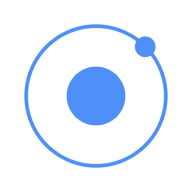

Xamarin and Ionic compete in cross-platform mobile app development. Ionic has an edge with its cost-efficiency and usability, especially for agile workflows.
Features: Xamarin utilizes .NET and C#, allowing robust Visual Studio integrations, superior performance, and native capabilities. Its cross-platform capability is enhanced by Xamarin.Forms, aiding in significant code reuse. Ionic offers a rich library of UI components and enables targeting multiple platforms with a single codebase maintained in JavaScript, HTML, and CSS. Ionic excels in rapid prototyping, supported by a variety of plugins that extend mobile functionalities.
Room for Improvement: Xamarin can be complex to set up and may require specialized skills for efficient use, impacting its approachability for new developers. It primarily suits those with existing Microsoft investments. Sometimes support issues arise with third-party integrations. Ionic could benefit from better performance optimization for large-scale applications. It often requires browser discrepancies adjustments, and managing complex animations can be challenging.
Ease of Deployment and Customer Service: Xamarin's deployment is streamlined within the Microsoft ecosystem but demands more management expertise and has a steeper learning curve. Ample documentation supports complex deployments. Ionic boasts a simple deployment process through its CLI and cloud services, allowing quick updates and flexibility. Its open-source nature ensures vast community support, enhancing its service accessibility.
Pricing and ROI: Xamarin has higher initial costs due to licensing and skill requirements but can offer a good ROI if leveraging preexisting Microsoft structures. Ionic, being open-source, significantly reduces costs with minimal licensing fees, leading to quicker ROI for startups and projects with budget constraints due to affordable deployment and low total ownership costs.
| Product | Market Share (%) |
|---|---|
| Xamarin Platform | 6.6% |
| Ionic | 6.3% |
| Other | 87.1% |


| Company Size | Count |
|---|---|
| Small Business | 7 |
| Midsize Enterprise | 2 |
| Large Enterprise | 6 |
| Company Size | Count |
|---|---|
| Small Business | 18 |
| Midsize Enterprise | 5 |
| Large Enterprise | 14 |
Ionic is an open-source UI toolkit for developing high-quality mobile and desktop apps with web technologies such as HTML, CSS, and JavaScript. Ionic focuses on the frontend UX and UI interaction of an app – UI controls, interactions, gestures, and animations. It is simple to learn and can be used without any frontend framework by utilizing a simple script inclusion.
While previous versions of Ionic were strongly connected to Angular, version 4.x of the framework was re-engineered to serve as an independent Web Component library, with integrations for the newest JavaScript frameworks, such as Angular. Ionic works well in most frontend frameworks, including React and Vue, however some frontend frameworks require a shim to enable full Web Component support.
The official Ionic CLI, or Command Line Interface, is a tool that enables developers to easily construct Ionic apps and offers a number of useful commands. The CLI installs and updates Ionic and also includes a built-in development server, build and debugging tools, and much more. If you are an Appflow member, you may manage your account and carry out cloud builds and deployments via the CLI.
Ionic Features
Ionic has many valuable key features. Some of the most useful ones include:
Ionic Benefits
There are many benefits to implementing Ionic. Some of the biggest advantages the solution offers include:
Xamarin is an open-source platform for developing modern and performant applications for iOS, Android, and Windows using.NET. Xamarin is an abstraction layer that manages how shared code is communicated to the platform's underlying code. Xamarin is for developers with the two following goals:
Cross-platform sharing of code, tests, and business logic.
Writing cross-platform apps in C# with Visual Studio.
Xamarin allows developers to share an average of 90% of their program across platforms. This enables programmers to achieve native performance, look, and feel on each platform while writing all of their business logic in a single language (or reusing existing application code).
Xamarin applications can be created on a PC or a Mac and compiled into native application packages, such as an .apk file for Android or an .ipa file for iOS.
Xamarin Platform Features
Xamarin Platform has many valuable key features. Some of the most useful ones include:
Xamarin Platform Benefits
There are many benefits to implementing the Xamarin Platform. Some of the biggest advantages the solution offers include:
We monitor all Mobile Development Platforms reviews to prevent fraudulent reviews and keep review quality high. We do not post reviews by company employees or direct competitors. We validate each review for authenticity via cross-reference with LinkedIn, and personal follow-up with the reviewer when necessary.